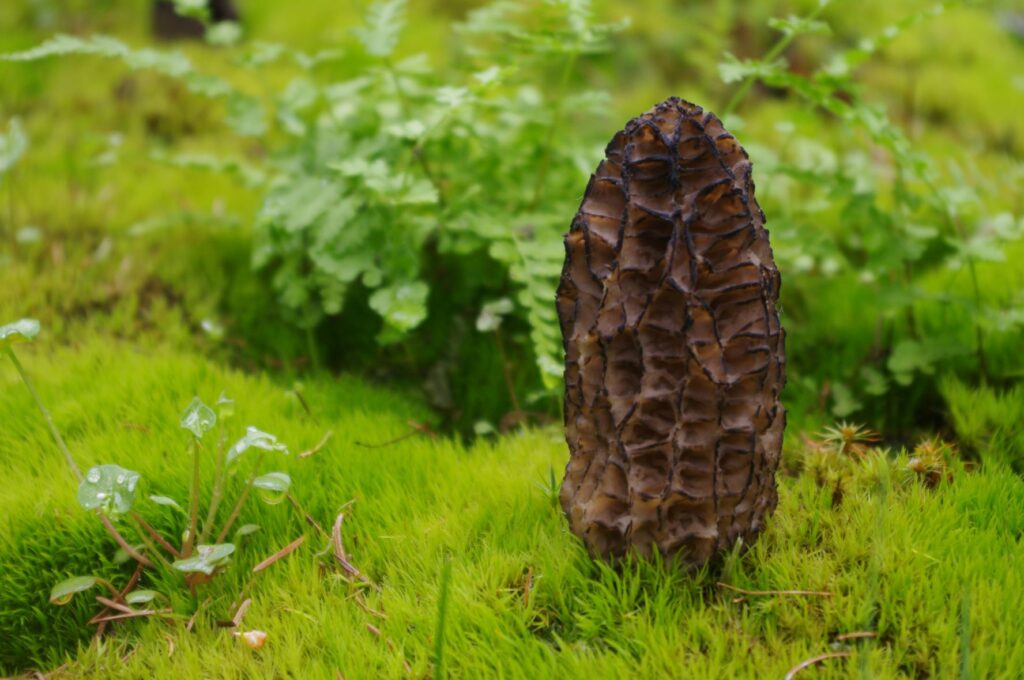By Rich Leon
No single wild mushroom has captured the hearts and minds of the American public like the morel. Finding the first one of the season is just as exciting as finding the first buttercup after a long winter. Morel season can start as early as January in California and go into July in the Rocky Mountains as spring marches north.
Here in Eastern Washington and North Idaho, the peak time can be anywhere from April into June, depending on temperature and moisture. I have found morels to be very fussy mushrooms. They don’t like it hot or cold or too wet. They are almost like a three-year-old child in that regard. I have been in areas where they will do really well one year and then the next year, nothing.
How to Identify
There is plenty of debate about the number of morels in the genus morchella. The two most common in our area are morchella elata (black morel) and morcella esculenta (yellow morel). We do have a few other ones around, so a good guide book would be helpful to have when you go on your fungus foray into the woods.
In early spring, we can also find verpa bohemica (early morel). A verpa looks like a thimble stuck on a finger. This species is not considered to be a true morel since the cap hangs from the apex of the stem, whereas in a true morel the cap is attached to the stem. Verpa is edible with caution; it should be eaten in moderation and must be well cooked. Verpa usually show up a week to a month before the regular morels.
Before you go out mushroom hunting, make sure you know the difference between the morels and the false morels. That is where a good book will come in very handy. A great paperback to have for your backpack is “All That The Rain Promises and More,” by David Arora.

where To Find
Morels can occur singly or in small clusters. They can blend in with their surroundings very well. When out looking for these mushrooms, the first one is always the hardest to find. Once the image is burned into your brain, it makes it easier to find other ones.
Keep looking in the area where you found the first one, and you more than likely will find others. It has been said that the best place to look for morels is the year after a forest fire. That may be true for some areas, but I have found over the years that it is not a 100 percent guarantee of finding them.
Best place to find morels in the Inland Northwest? This is one question you never want to ask a serious mushroom hunter, because they will never tell you their perfect spots, much like an angler or huckleberry picker not wanting to reveal the location of her secret fishing hole or berry patch.
How to Prep and Cook
When cleaning your morels for either cooking or drying, be sure to cut them in half lengthwise to check for any bugs within the hollow confines of the stem and cap. You probably won’t find any, but it is always better safe than sorry. You don’t want any little hitchhikers ruining your meal.
Morels dry really well and retain their rich, full flavor. Slice them in half and put them on a screen in a warm room, use a dehydrator, or even place them outside on a warm sunny day. Once they are fully dried, they can be put in glass jars and their flavor can last for many years.
This mushroom hunter will wish you happy hunting, and remind you to make sure you are 100 percent certain of a mushroom’s identity before you try any wild mushroom.


A yellow morel (left) versus a false morel (right). // Photos: Rich Leon
Find more stories about foraging for morels in the OTO archives.













